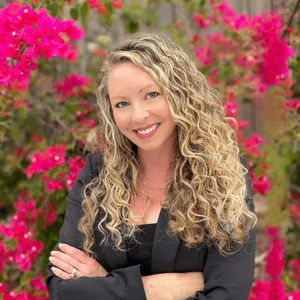Five Steps to Improve Accountability in Your Dental Practice
What is accountability?
According to the Oxford Languages Dictionary, accountability is the obligation to bear the consequences for failure to perform as expected.
Why does it seem so difficult at times to have our team perform as expected? A common excuse I’ve heard is, “It’s just this generation.” Now, I’m technically a millennial and must defend my fellow millennials.
However, a lack of accountability isn’t a generational mindset. It’s a failure in communication and leadership. If we are not crystal clear with our expectations, how is our team supposed to live up to them?
Here are five simple steps to help any practice leader improve their communication and their team’s ability to perform as expected:
Step 1: Does your team clearly know your expectations?
Don’t you think after you said it once that everyone would do or not do what you’re asking of them?
My hand is raised. The fact of the matter is: there is what you said AND what they understood.
If you’re a fast-paced, quickly evolving practice, messages can be lost by sheer volume. The first step is to give your team the benefit of the doubt and get your message out, again. Be very specific.
- What is your team supposed to do?
- How are they supposed to do it?
- By when are they supposed to complete it?
- To whom do they report the completed task or project?
The most common trap is that we, as leaders, assume way too much. Don’t take for granted what we believe to be obvious communication and direction.
It may not be so obvious to your team. Step one is all about practice leaders being accountable for their own communication skills.
Step 2: A team member fails to follow through, now what?
Acknowledge the behavior or poor performance. Then, the most effective strategy is to ask for more information. Get curious and don’t assume there was bad intent.
Here is an example, “Susie, I see you didn’t take the trash out last night. What happened?”
Be open to the idea that what you believed happened didn’t actually play out. Maybe Susie assigned the task to another team member and this issue needs to be addressed with the other member.
Maybe Susie had to run out because her daughter was sick, and she intended to come in early the next morning to complete her task.
Once you find out what actually happened, then you can address and correct the problem.
Step 3: Coach or educate the team member on what he/she did incorrectly and review what your expectations are.
Here is an example, “Susie, the expectation is that the trash is removed nightly. Is there anything preventing you from getting this done? Is there anything you need from me?”
Address any possible barriers, obstacles and objections.
Let’s say the scenario is that there was a valid reason. “Susie, I hope your daughter is feeling much better. I know you are aware that the trash needs to be taken out nightly. Next time if you are unable to complete this task by the end of the day, I expect that you communicate directly with me. Please call or text me that evening so that we can create a solution together to ensure this task is completed.”
Step 4: Is there a consequence for not being accountable?
State what happens should this person knowingly repeat the behavior or poor performance.
“Susie, we spoke about taking the trash out nightly just last week. I’m going to document that we had this conversation. Next time I’ll have to write a formal violation in your file. This could lead to termination if we have to continue to address your lack of follow through and poor communication. I expect everyone in this practice to follow through with their responsibilities and to communicate should there be a reason why the task could not be completed. Do you have any questions? Is there anything you need from me?”
Always give your team the opportunity to ask for clarity or to ask for help from you. One of our responsibilities as a practice leader is to ensure our team has everything they need to do a job well.
Step 5: Follow up and acknowledge the positive behavior or performance change.
This is the most integral step of them all.
Our communication with our team should not only be critical or constructive feedback.
Let’s “catch” people doing a good job. “Susie, I’ve noticed you’ve taken the trash out every night this week as expected. Great job! I appreciate your follow through.”
When your team fulfills your expectations, it’s important they know it. Virginia H. Pearce stated, “Positive reinforcement changes behavior for the better, while criticism stabilizes negative behaviors and blocks change.”
When we have such limited time in the day, it is so easy to only focus on and fix what’s broken. However, the most effective approach to instill change and accountability is through consistent positive communication and recognition.
These five simple steps to improve accountability were intended to help you maximize your team’s potential and to help you become a more effective leader.
- Setting clear expectations
- Calling out the poor behavior
- Coaching
- Defining the consequence and acknowledging a job well done
are all necessary actions. We must recognize our team has great potential and an effective leader can turn that potential into action. Successful businessman and author Bob Proctor summed it up best, “Accountability is the glue that ties commitment to result.”
Meet the Author

Erika Pusillo, MAADOM is the Practice Optimizer at Spodak Dental Group in Delray Beach, Florida.
She began her dental career in 2009 as a dental assistant and now leads a team of 50 in a single location, multi-specialty, state-of-the-art practice with a goal to empower the team to take the very best care of their patients.
Her passion is bringing out the potential in others and enjoys speaking to dental teams through the Bullet Proof Dental Practice. Erika is a lifetime AADOM member.
She received her AADOM Fellowship designation in 2018, her AADOM Mastership designation in 2021 and is currently on track to be inducted into AADOM’s 2022 class of Diplomates.








